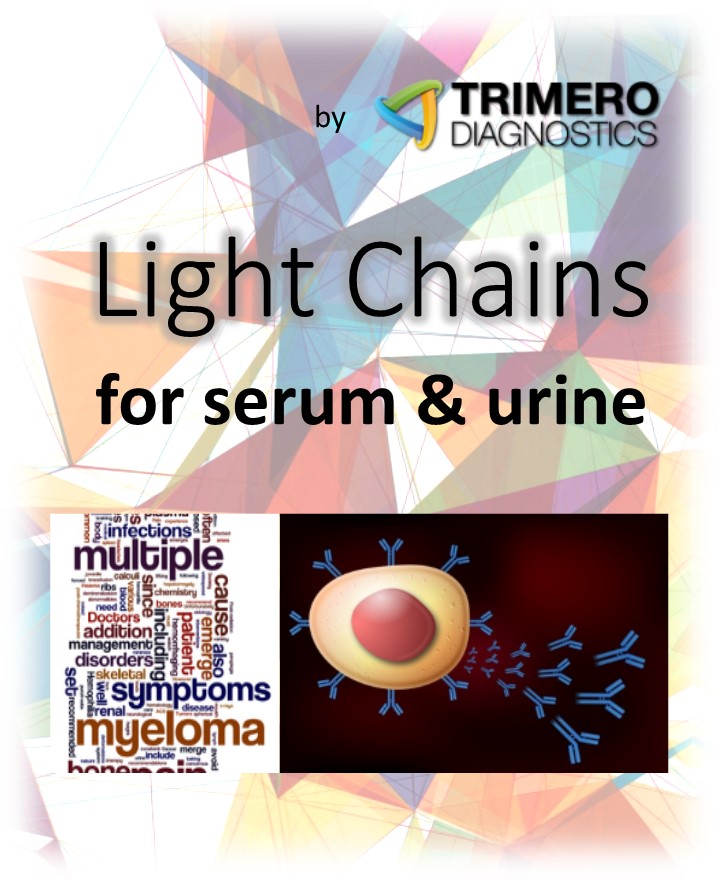KAPPA and LAMBDA assays, in serum and urine, for nephelometers and clinical chemistry analyzers
TRIMERO Diagnostics offers CE marked IVD assays for KAPPA and LAMBDA light chains (bound and free), for both urine and serum samples.
Applications are available for nephelometers and the most popular clinical chemistry analysers on the market.
In order to ensure lot to lot traceability, Kappa and Lambda values have been traced to the European Reference Material ERM-DA470k/IFCC (Institute for Reference Materials and Measurements, IRMM), using the the formula of M.M. Lievens.
Immunoglobulin molecules are composed of two identical heavy chains (HC) of the same type and two identical light chains (LC) of the same type, linked by a variable number of disulphide bridges and non-covalent links. The amount of LC and HC produced by plasma cells is unbalanced, resulting in an excess of LC (FLC = Free Light Chains) that are secreted in the serum and, given their low molecular weight (approx. 22-25 KDa for the monomers), are almost completely eliminated by the kidney. Nevertheless, in healthy individuals the majority of LC in serum exist bound to HC (BLC = Bound Light Chains) as intact immunoglobulin molecules, and under normal conditions, total κ/λ ratio should be normally around 2:1 in serum.
In the so-called monoclonal gammopathies, plasma cells usually generate large (sometimes huge) quantities of monoclonal immunoglobulin LC, which may be present either alone or in conjugation with intact immunoglobulin molecules. Quantities of Light Chains, both in serum and in urine, exceeding normal values or an abnormal KAP/LAM ratio may be indicative of the presence of a monoclonal gammopathy, which should always be confirmed by electrophoretic techniques. Its quantification may also be useful in monitoring the monoclonal component.
Other TRIMERO’s available assays for nephelometry and turbidimetry include: KLoneus® Free Light Chains (FLC) for serum and urine, Serum Amyloid A (SAA), C1q Complement, C5 Complement, Factor B (C3 Proactivator), C1 (Esterase) Inhibitor, Retinol Binding Protein (RBP) for serum and urine, IgD Immunoglobulins, Soluble Transferrin Receptor (sTfR), Hemopexin, Cystatin-C for serum and urine, A1-Microglobulin, Beta-2 Microglobulin for serum and urine.





